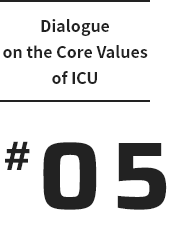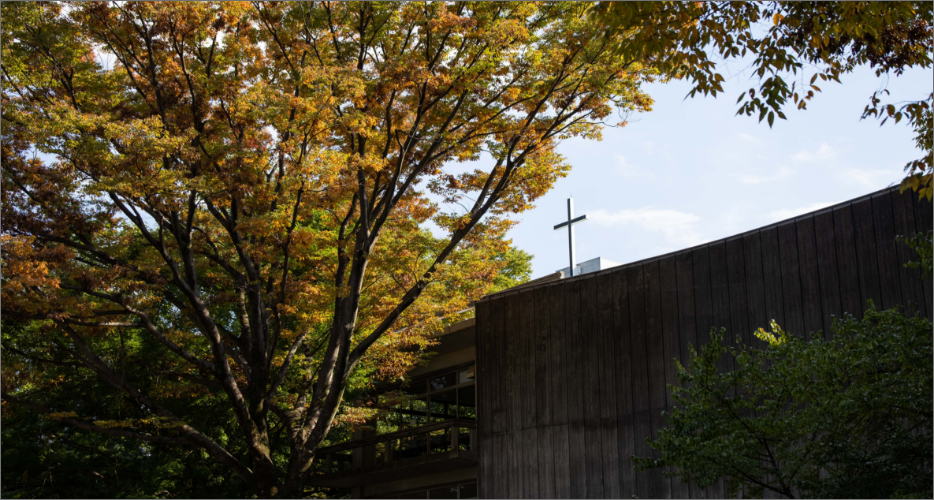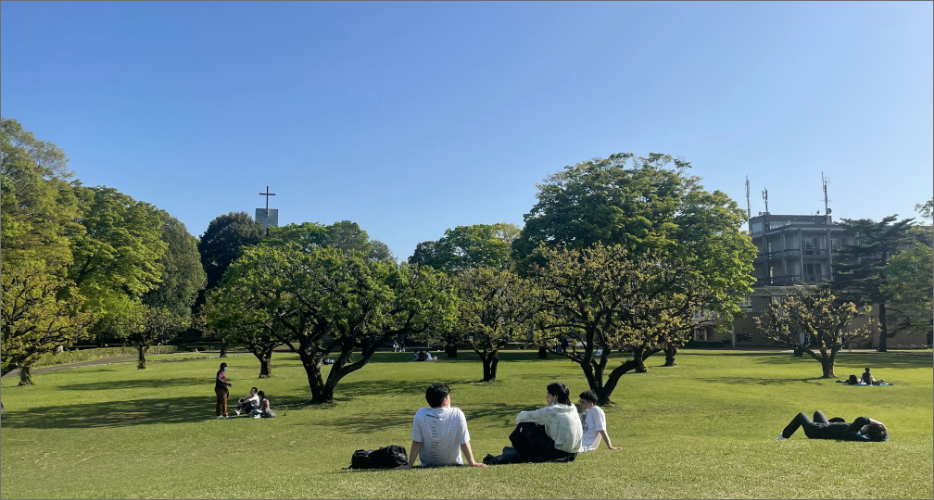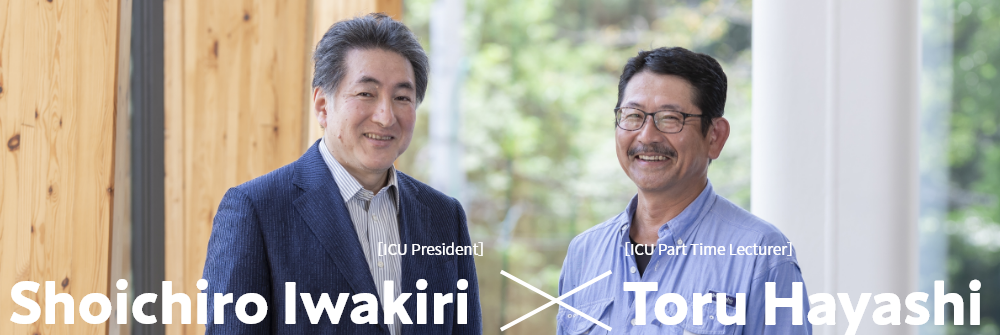
ICU Professor Emeritus Kazuo Kitahara, a physics scholar well versed in the sciences, delved into the quality of liberal arts from a scientific perspective through a dialogue with ICU President Shoichiro Iwakiri.
#Arts and Science #Common Good #Natural Sciences #Christianity
The future of liberal arts and science
The concepts of science and knowledge ―
With the ongoing COVID-19 pandemic and accelerated pace of digital transformation (DX), more emphasis has been placed on scientific knowledge across a wide range of fields in the last few years. Science is at the root of the liberal arts education ICU offers. In recent years, many Japanese universities have also come to focus on nurturing human resources equipped with knowledge and skills in areas such as data science.
On the other hand, considering science as a panacea for all our problems has been the subject of much debate. Many global problems cannot be solved even by means of cutting-edge technology.
The dialogue between ICU Professor Emeritus Kazuo Kitahara, who has extensive research experience at domestic universities such as Tokyo Institute of Technology and Tokyo University of Science as well as in academia overseas, and ICU President Shoichiro Iwakiri, sheds light on the liberal arts education at ICU and the concepts of science and knowledge.
Paragraph 01
What science can do amidst the pandemic
Modern society has inherited an intellectual legacy that serves as its foundation. Scientific development in particular has been the cornerstone of modern civilization, contributing to human society in myriad ways. Needless to say, the response to the ongoing pandemic has been founded on our skills and knowledge nurtured through science.
Iwakiri stated, “The invisible virus has become visible by means of science. A century ago, people knew that a virus was the cause of the Spanish flu pandemic, but details such as its genetic structure were not elucidated.”
Science enables us to decode hitherto unknown matters, and also guides us in understanding phenomena such as the following. “Conspiracy theories have thrived by feeding on public anxiety during the pandemic, but they are incompatible with science. I feel issues that have surfaced cannot be grasped by science alone.”
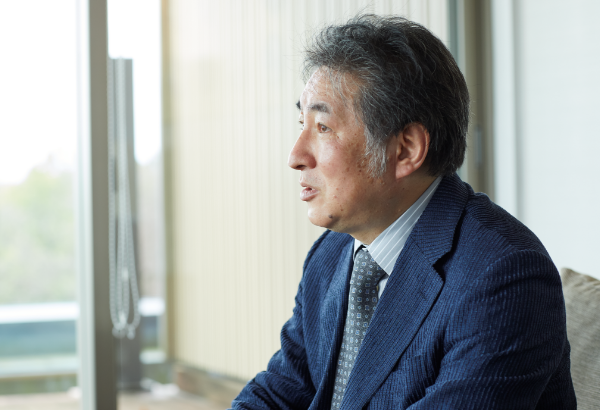
Kitahara also stressed the importance of being constantly aware that things cannot be elucidated by science alone. “This attitude is essential when working with science. We need to go beyond the raw data, observe the ever-changing reality and delve deeply into the narrative behind what appears on the surface. As educators, we are obliged to nurture a perspective that focuses on the background of scientific data.”
On the other hand, Kitahara referred to the straightforward nature of science. “Einstein’s theory is not easy to understand, but his motivation for research would have been very simple: to untangle complicated matters into plain questions that allow him to think deeply, and concoct something simple but awesome, its importance readily convincing to others. This is how science fascinates us.”
Paragraph 02
The importance of both the sciences and the arts
When we look at the relationship between the sciences and the arts, recent emphasis on STEAM education comes to mind; this represents an addition of the arts (A) to the Obama administration’s core educational policy in science, technology, engineering and mathematics(STEM). The Japanese translation for arts is usually geijutsu, but, in this context, it includes not just art and music, but also dance, drama, sports, literature, history, etc., a whole range of arts embracing the human body, sensibility and drama. A comprehensive study of these areas enhances creativity and innovation. This movement emphasizes the importance of synergy between the sciences and the arts in education.
Iwakiri mentioned the reality that lies beyond science. “Science covers both the visible, such as classic physics and mechanics, and the invisible, such as quantum mechanics. They are both real in that they exist, and the interesting thing is that they can seem very different depending on where you stand.”
He continued, “The scientific understanding of reality can be similar to that in the arts. Take Picasso’s cubism* for example. We don’t actually see the objects as he portrayed them. But he depicted subjects as he saw them in his mind. I see a strange link between the physics of Einstein and avant-garde art.”
*Cubism: Objects are analyzed not from a single perspective but broken up into small facets and reassembled into a single tableau
Kitahara, who has experience conducting research at several universities in the U.S. said, “American universities usually have an arts department. Institutions like the Massachusetts Institute of Technology (MIT)offer majors in the arts and humanities. At the root of this thinking is that the arts are indispensable to science.”
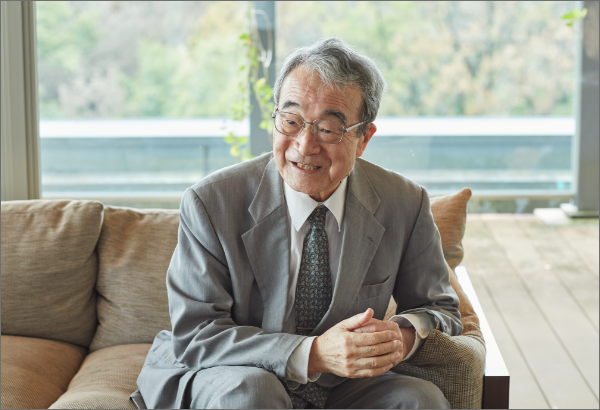
Kitahara mentioned that the American Association for the Advancement of Science states “Science is a blend of logic and imagination” in its publication Science for All Americans. In other words, imagination is indispensable to the scientific endeavor, not just the use of logic. The book also refers to the importance of distinguishing between constancy and change in science. Humans like constancy but they also yearn for change.”
Paragraph 03
Responsible global citizens, collaborative learning across fields
A multilateral perspective and complex thinking are indispensable when observing reality. This is exactly what the liberal arts at ICU nurtures. Kitahara described his idea of the concept as “a skill that liberates us from biases and our preconceptions that enables us to think freely with our own minds. In this educational tradition, communicating with others and sharing thoughts are vital.” This ability is the very definition of the arts.
Kitahara emphasized the importance of science communication, which MEXT defines as an “activity that communicates the thought-provoking aspect of science and issues in scientific technology, to think together and raise awareness.”
He added that this includes sharing and engaging in the development of knowledge. “The Royal Society, established in 17th century England, became the first learned society for the exploration of science. Until then, individuals conducted research on their own about whatever interested them. But when they started sharing the results and methods used for research, others were inspired to emulate their forebears, which paved the way for scientific progress. This led to the acknowledgement of knowledge as a public good, and the understanding that sharing knowledge brings development.”
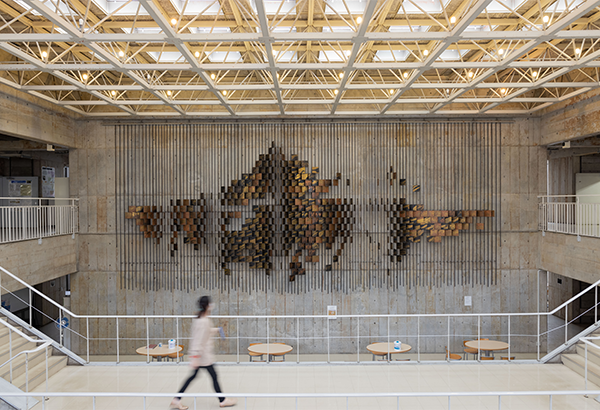
The Science Hall is currently the center of education and research in the areas of natural sciences at ICU.
He continued, “Furthermore, knowledge should be a public good in the sense that access should not be limited. As scientists we must deliver easy-to-understand information about knowledge and be able to answer questions posed by the lay community. This response is very important. The English word responsibility is usually translated into Japanese as sekinin with an emphasis on liability, but I prefer ōtōsei, which focuses on accountability and being answerable for one’s actions. It’s vital for ICU’s liberal arts education to show how important this response is. It does not simply imply making adjustments for a certain situation, but shows the way for change that aims for a better future and steps to achieve this end. This is what we mean when we talk of responsible global citizens.”
The Science Hall is currently the center of education and research in the areas of natural sciences at ICU.
Paragraph 04
The academic community that ICU aspires to
The importance of sharing knowledge links directly with the spirit of the common good in ICU’s Medium-Term Plan for AY2021~AY2025.
Iwakiri explained that the common good refers to sharing the good and avoiding exclusive use. “Let us do good deeds for the benefit of all. A groundbreaking scientific theorem would not mean much if only the discoverer benefited from it. It is important for it to be placed for all to see, use and develop through dialogue. This is similar to how private collections of the aristocracy reserved for their exclusive pleasure were later exhibited in museums open to all. We live as part of a system in modern civil society.”
Kitahara replied, “Sharing and developing knowledge is also a Christian tradition, as we regard wisdom to be granted by the grace of God.”

He went on to say that in De Trinitate, St. Augustine talked of two types of knowledge: scientia (knowledge of temporal things) and sapientia(wisdom)attained through adherence to God (both Latin terms). “What this means is that some truths cannot be elucidated by human knowledge. Edmund Husserl, who established the school of phenomenology, also said that we are seekers of the unattainable truth. This attitude of humility inspires us to strive for the truth.”
Paragraph 05
The significance of Christian universities
ICU has Christian in its name, the chapel being the first structure people see when they walk in from the front gate. What are the benefits of studying in this kind of environment?
Kitahara said, “The chapel’s importance lies in providing a place where the community can assemble together for dialogue with a single purpose. We all have different interests, but a firm principle binds the community together. I believe this to be the advantage of studying at a Christian university.”
Iwakiri went on to state, “The relationship between the university and Christianity is a sensitive subject. In the founding days, ICU had more rules and regulations that gave it a rather conservative image. But in the 70 years since, the University has blended into Japanese society by offering a more open image of Christianity in response to the changes that have occurred. Faculty members continue to have a deep understanding of Christianity, collectively seeing another truth anchored in God. I see the chapel as a physical representation of this thinking.”
The ICU campus is founded on a Christian spirit rooted in a culture of sharing with others. Kitahara talked about Gregory of Nyssa, a 4th century Christian bishop. “He posited that there were two types of relationships: metousia (ousia meaning substance) and koinonia (both Greek words). The former refers to a vertical relationship of humans participating in God’s perfections, and the latter, a horizontal fellowship in finding God through each other. The ICU learning community is a combination of the two.”
At ICU, students engage in a vertical pursuit of the truth by delving into their specialty, as well as horizontal learning across multiple disciplines. The two approaches cultivate life-long learners who have the strength to survive the intractable challenges of the real world.
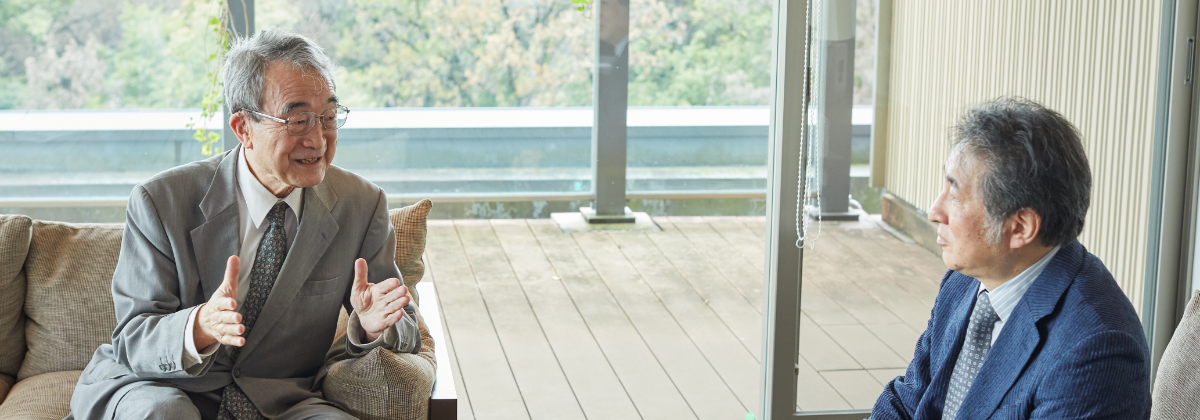
[To conclude]
Simply following the science will not solve all our problems.
Kitahara mentioned this in the first half of the conversation. It may sound rather strange coming from a scientist, but it is his conclusion following a long career in pursuit of the truth in both science and theology.
The two emphasized the importance of sharing knowledge. This is perhaps the answer to finding a creative response for global disparity and excessive emphasis on individual responsibility in modern society.
How do we live out the real world wrought with complex and diverse problems that cannot be solved by human knowledge? Liberal arts with its multilateral perspectives beyond science will surely provide us with important clues.
Related Information
Sub Dialogue

Intellectual Interaction
Is kagaku the appropriate Japanese word for science?
This was a question that came up in their discussion about the role of science and knowledge.
Their thought-provoking conversation provided important suggestions
Translations often narrow down the meaning of the original.
- Iwakiri
- The etymology of science can be traced back to scio in Latin, but translating it as kagaku moves the meaning away from the original.
- Kitahara
- Scio means to know and understand.
- Iwakiri
- It’s not a mistranslation. We have many examples of this kind. For example, the English life and French la vie are often translated as inochi in Japanese, but that confines the meaning to simply biological life, whereas the English and French terms also imply the course of life and livelihood. We tend to narrow down the meaning of words in translation depending on the context.
- Kitahara
- I think translating critical thinking as hihanteki shiko has the same problem. In physics, the critical point is the set of conditions under which a liquid and its vapor become identical. Critical implies clarifying something ambiguous, but hihanteki leans toward expressing unfavorable comments.
- Iwakiri
- Another example would be service learning. Service is usually understood to be of an altruistic nature, of the sort characterized by volunteer work, but I think it has a deeper meaning.
- Kitahara
- I agree. We provide service to others who have been created by God. That leads us to think of discerning God’s will as the real purpose of service learning.
PROFILE
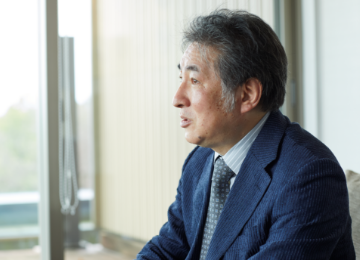
Dr. Shoichiro Iwakiri
The President of International Christian University specializes in French literature. In 2008, he was awarded the 15th Yuasa Yoshiko Prize (Section of Drama Translation). Professor Iwakiri completed the Third Cycle and received a DEA from the Department of Science of Texts and Documents, Paris Diderot University (Paris 7). Prior to becoming ICU President in April 2020, he was Director of the Admissions Center and Dean of the College of Liberal Arts.
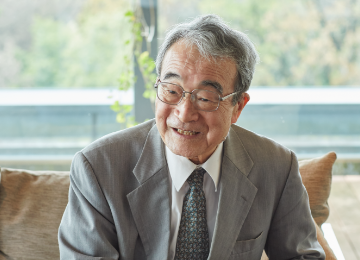
Dr. Kazuo Kitahara
The International Christian University Professor Emeritus graduated from the University of Tokyo Faculty of Science Department of Physics in 1969 and specializes in statistical mechanics. He studied on a Belgian Government scholarship between 1971~74 at Université Libre de Bruxelles from which he received a Ph.D. in science in 1974. He then served as researcher at Massachusetts Institute of Technology, research assistant at the University of Tokyo, Assistant Professor at Shizuoka University, assistant professor and professor at Tokyo Institute of Technology and Professor at ICU, where he held the positions of Dean of Students and Chair of the Department of Natural Sciences. He was President of the Physical Society of Japan, member of the Science Council of Japan and Professor at Tokyo University of Science before he was awarded Professor Emeritus status from Tokyo Institute of Technology in 1998 and ICU in 2011. He has also served as a pastor at Sangenjaya Church of the United Church of Christ in Japan since 2018.
Planning, and Production and Writing :WAVE.LTD


